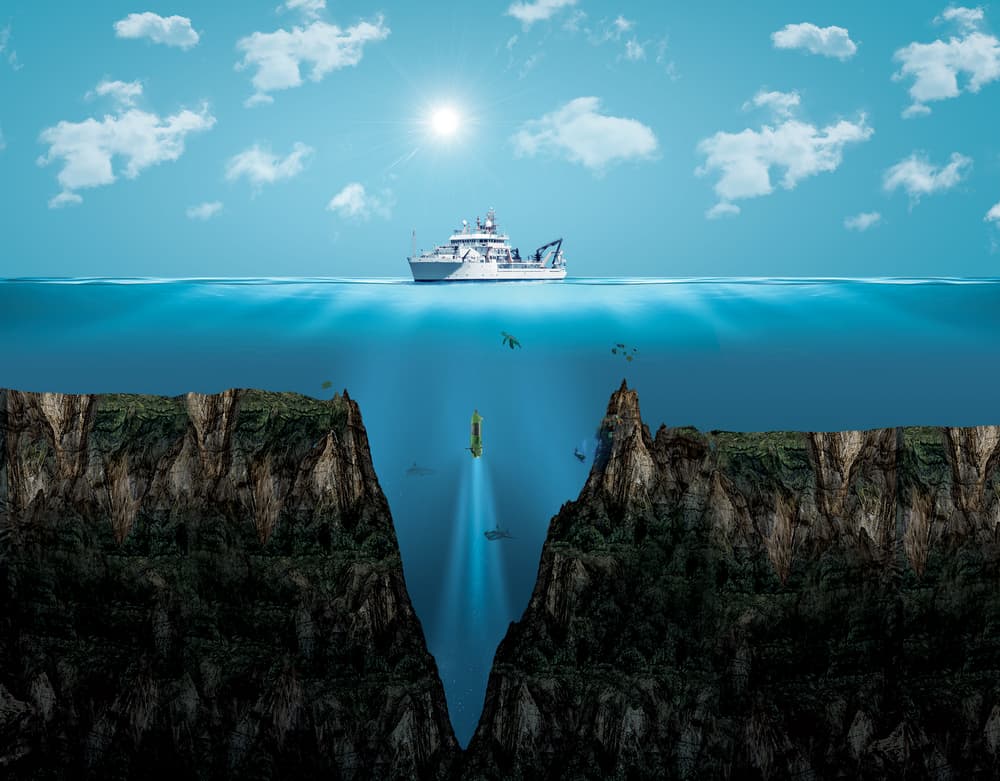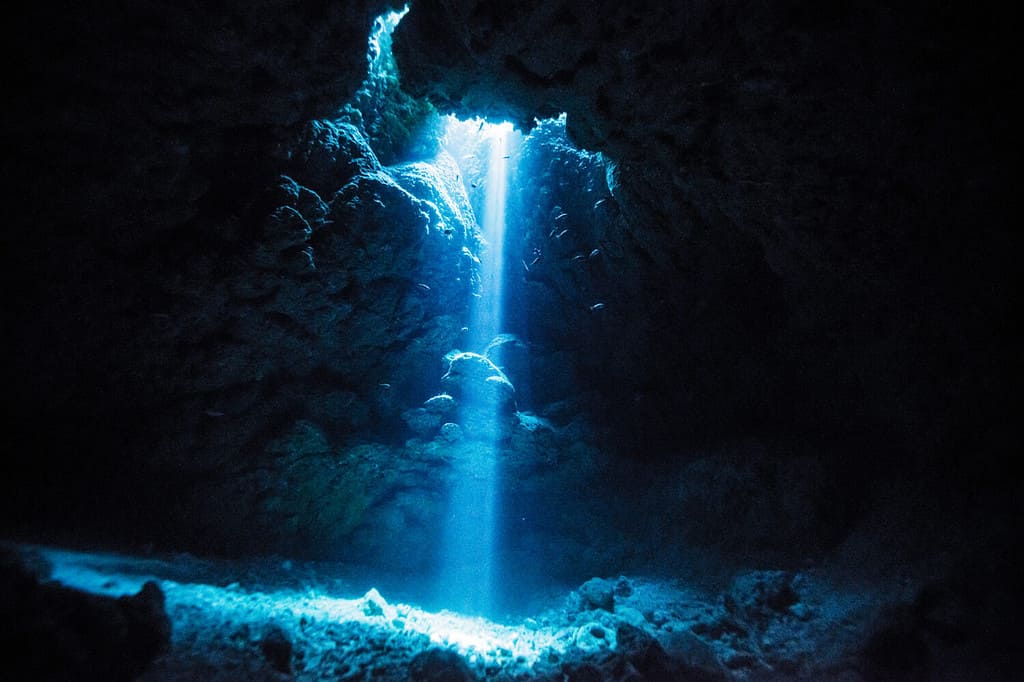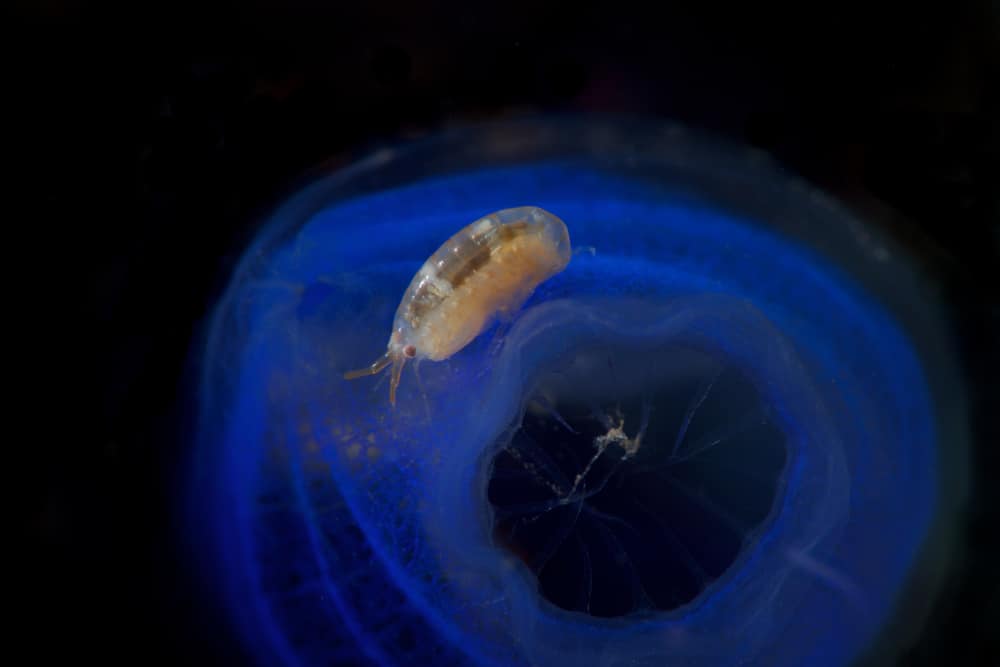Some places on Earth are so remote and foreign that they boggle the mind. Easter Island, the peak of Mount Everest, and McMurdo Station in Antarctica rank among the most difficult-to-reach places on the planet. However, one spot is even more inaccessible, the Mariana Trench. Located in the western Pacific Ocean, this crescent-shaped trench is the deepest ocean trench on Earth. This incredibly deep geological feature has received intense scrutiny from the scientific community, but many questions about the trench remain. If you’ve ever wondered how and when the Mariana Trench was formed, then you’re in the right place!
Background on the Mariana Trench
The Mariana Trench is an ocean trench located around 124 miles east of the Mariana Islands. It lies within the U.S. dependencies of Guam and the Northern Mariana Islands. Due to its importance as a geological feature, the U.S. declared the Mariana Trench a national monument in 2009.
The Mariana Trench shares its name with the nearby Mariana Islands. These islands, in turn, get their name from Queen Mariana of Austria, who ruled as Queen of Spain from 1649 until 1665.
Size and Depth of the Mariana Trench

Mount Everest would fit inside the Mariana Trench. the ocean’s deepest point.
©DOERS/Shutterstock.com
The Mariana Trench measures approximately 1,580 miles long and around 43 miles wide on average. The depth of the trench varies depending on the location. Currently, the deepest known part of the trench lies around 36,037 feet (plus or minus 82 feet) below the surface. For reference, if the Mariana Trench were inverted and erected as a mountain, it would stand 1.2 miles higher than Mount Everest. That said, the size and depth of the trench make it extremely difficult to survey accurately.
How and When the Mariana Trench Was Formed

The Mariana Trench formed over 170 million years ago due to the subduction of the Pacific Plate under the Mariana Plate.
©divedog/Shutterstock.com
The Mariana Trench was formed roughly 170 million years ago when the Pacific Plate subducted the Mariana Plate. This process, known as subduction, occurs at the boundary of tectonic plates.
The Earth’s crust, or lithosphere, consists of numerous slowly moving plates. These plates ride on top of the molten rock that makes up the Earth’s mantle. When one plate collides head-on with another plate, one plate will eventually thrust underneath (subduct) the other.
The Mariana Trench lies at the boundary where the Pacific Plate meets the Mariana Plate. The Pacific Plate is the largest of the 7 major tectonic plates that cover roughly 95% of the Earth’s surface. It encompasses much of the Pacific Ocean or an area of roughly 103,300,000 square kilometers. Meanwhile, the Mariana Plate is a micro tectonic plate located just west of the Mariana Trench. This plate forms the base of the Mariana Islands, which in turn belongs to the Izu-Bonin-Mariana Arc.
Sometime 170 million years ago, the Pacific Plate subducted the much younger and smaller Mariana Plate. This caused the Mariana Plate to ride on top of the Pacific Plate. The resulting movement created the Mariana Trench as the descending Pacific Plate dragged down the edge of the Mariana Plate. Moreover, the movement of the two plates led to the emergence of the Mariana Islands.
Exploration of the Mariana Trench
The Mariana Trench was first discovered in 1875 by scientific crewmembers aboard the HMS Challenger. Launched in 1872, the Challenger expedition was a scientific voyage sponsored by the Royal Society of London with the purpose of exploring and surveying the Earth’s oceans. In 1875, the Challenger expedition first sounded the Mariana Trench, collecting a recorded depth of 26,850 feet. The site of this first sounding was labeled “Challenger deep” on subsequent maps.
Exploration of the Mariana Trench picked up significantly in the second half of the 20th century. In 1951, HMS Challenger II surveyed the Mariana Trench using echo sounding. This method was much more technologically advanced than the lead and line-sounding techniques used by the first Challenger expedition. Using this method, Challenger II recorded a maximum depth of 35,760 feet at the site known as Challenger Deep, the deepest known part of the trench.
Over the next few decades, numerous attempts were made to measure the depth of the trench. These subsequent expeditions employed various tools and techniques to measure the trench, including multi-beam echo sounders, sonar mapping, seismometers, and hydrophones. To date, the deepest measurement recorded yielded a result of 36,037 feet, plus or minus 82 feet.
In addition to sounding expeditions, several manned and unmanned craft have explored the Mariana Trench. The first manned expedition vessel, Trieste, reached the bottom of the trench on January 23, 1960. This Swiss-designed, Italian-built bathyscaphe was piloted by Don Walsh and Jacque Piccard. These two men were the first people to physically explore the bottom of the trench.
Wildlife in the Mariana Trench

Divers and submersibles have found amphipods and other lifeforms in the Mariana Trench.
©The Urban Tropic/Shutterstock.com
At the bottom of the trench, water pressures reach nearly 15,750 psi. This equates to nearly 1,071 times more pressure than that experienced at sea level. At this depth, water density increases by nearly 5%, and temperatures drop to near freezing.
Given the harsh environment at the bottom of the Mariana Trench, scientists used to think nothing could live at such depths. They were thus extremely surprised when Piccard and Walsh reported seeing large creatures living at the bottom of the trench during their manned expedition aboard the Trieste in 1960. Both men reported seeing large shrimp, as well as lifeforms that resembled sea cucumbers.
Later expeditions discovered numerous other lifeforms living in the Mariana Trench. These include giant single-celled foraminiferans, snailfish, and tiny amphipods. Researchers have also recorded the sound of baleen whales inside the trench. That said, no large life forms, such as whales, have been discovered at the bottom of the trench.
Pollution and the Mariana Trench
Over the course of several expeditions, researchers have found widespread pollution throughout the Mariana Trench. An expedition in 2016 recovered organisms with elevated levels of PCBs. These toxic chemicals were banned in the 1970s due to the harm that they cause plants and animals. Researchers also confirmed that all amphipods studied in the trench contained some microplastic material in their stomachs. In 2019, researchers found a plastic bag and candy wrappers in the trench, as well as carbon-14 radiation from nuclear bomb testing.
The photo featured at the top of this post is © iStock.com/ratpack223
Thank you for reading! Have some feedback for us? Contact the AZ Animals editorial team.






